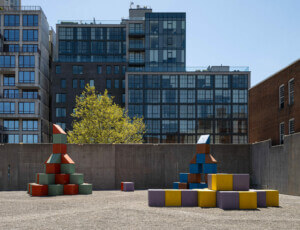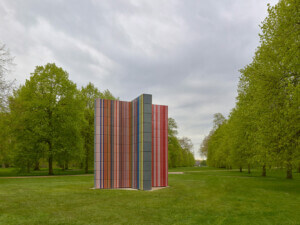Ellsworth Kelly at 100
Glenstone
Potomac, Maryland
Through March 2024
Arts institutions all over the world have been breaking out their hard-edge abstraction canvases to celebrate the 100th birthday of the late painter Ellsworth Kelly. The Edward Hopper House in Nyack is hanging his lithographs of waterways; the Art Institute of Chicago is showing a collection of portraits; the Philadelphia Museum of Art is displaying early drawings from Paris. But the Museum of Modern Art (MoMA) presented Ellsworth Kelly: A Centennial Celebration in its atrium, notably highlighting Sculpture for a Large Wall (1957), originally created for Philadelphia’s Transportation Building and its Greyhound Bus Terminal. Kelly had first designed brass screens for the Post House restaurant in the Transportation Building. Upon seeing these designs, the building’s architect, Vincent Kling, commissioned Kelly to make a large piece for the building. This piece was originally titled Transportation Building Lobby Sculpture before being rebranded to, presumably, make it more sellable. Forty-four feet of panels tilt and curve at a variety of angles, catching and bouncing the light in new ways throughout the day as the sun moves. While abstract metal wall sculptures have now become commonplace in transit hubs worldwide, Kelly’s work was a blueprint, offering an exciting and upbeat break from tradition when it was first installed.
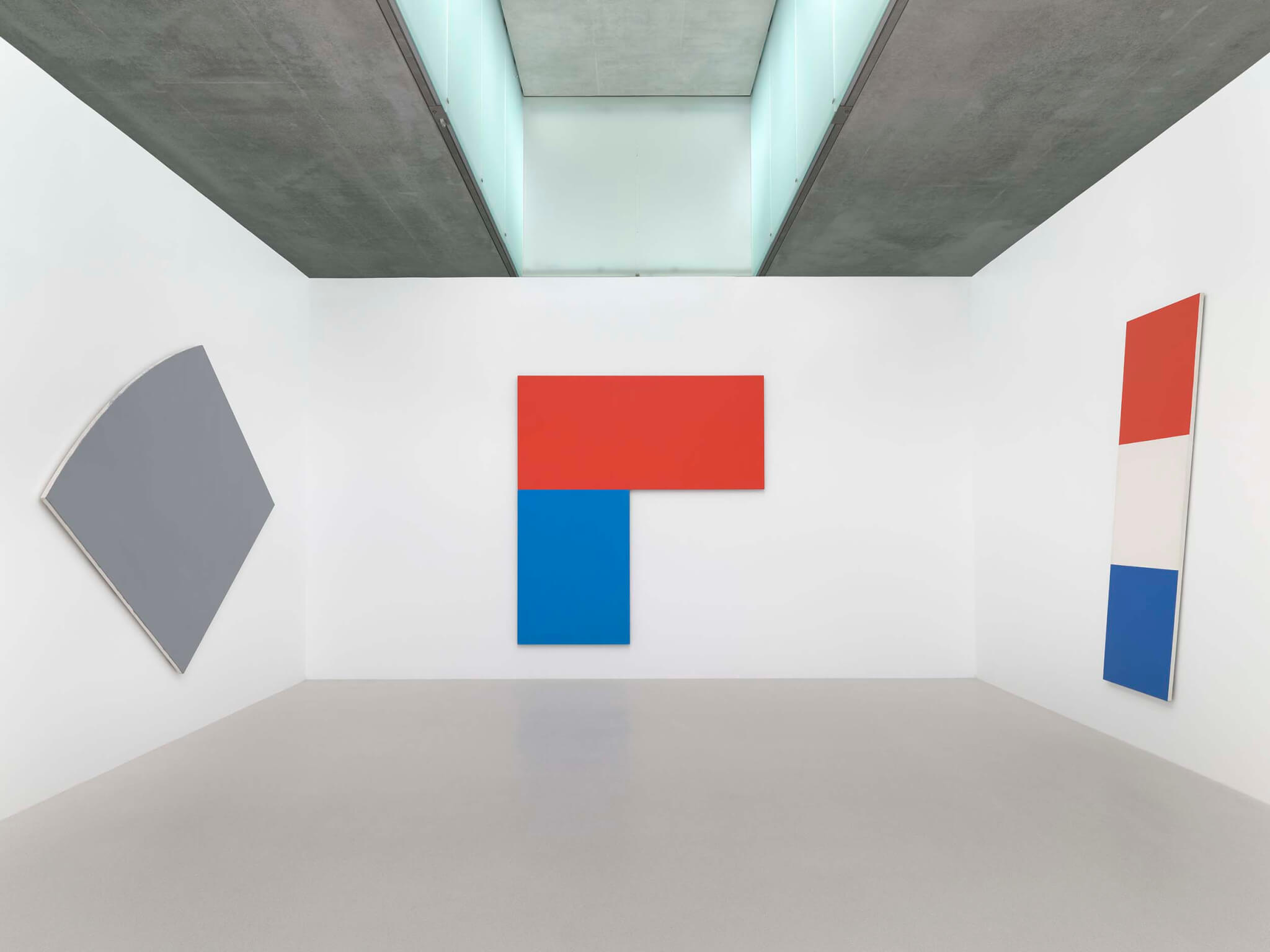
Glenstone; Red White Blue, 1968 Private Collection All artworks © Ellsworth Kelly Foundation (Ron Amstutz/Courtesy Glenstone Museum, Potomac, Maryland)
Public art can grab a commuters’ attention and enhance their day-to-day travels, but it can also fade into the background, functioning as an ambient accompaniment to the wait for one’s bus. Perversely, the MoMA installation—billed as a celebration of Kelly’s career—served as a reminder of this dynamic. For much of the exhibition’s run, the atrium became a queueing spot for museumgoers eager to view the Guillermo del Toro exhibition featuring sets and puppets from Pinocchio. While the stanchioned-off line certainly provided opportunities for visitors to encounter the repurposed Transportation Building sculpture, it certainly wasn’t the main event. People looked at their phones, chatted with each other, and nervously asked gallery attendants just how long the line would take—an experience probably quite like those reading newspapers and killing time while waiting for the Greyhound in 1950s Philly.
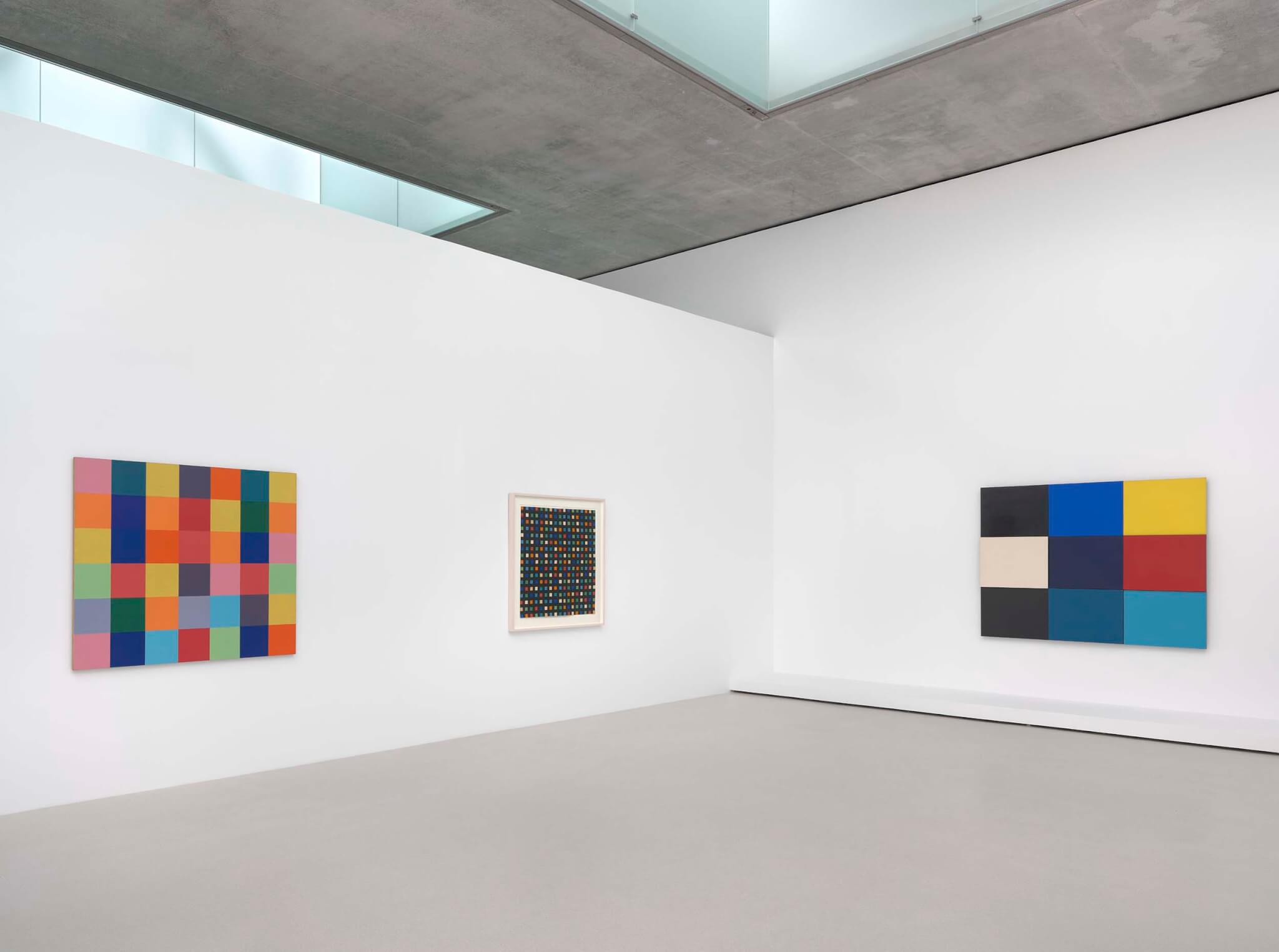

Perhaps the most ambitious centennial Kelly exhibition is at Glenstone, a difficult-to-access, private contemporary art museum located about an hour’s drive from Washington, D.C., among rolling hills planted with wildflowers. Spread out across many galleries in Glenstone’s Pavilions space, designed by Thomas Phifer and Partners, the show guides visitors more or less chronologically through the long sweep of Kelly’s career.
The first galleries offer a glimpse into Kelly’s time in Paris in the late 1940s and early 1950s, when he was first compelled to reduce the architecture around him into hard-edged shapes and lines. A Kilometer Marker (1949) becomes a semicircle atop a rectangle; the Seine (1951) is reduced to a grid of black-and-white rectangles that feel almost pointillist. As Kelly’s career progressed, he began to push his works beyond the constraints of the rectangular canvas, incorporating the negative space on the walls surrounding those works, as in 1956’s Painting in Three Panels, and reshaping and embracing a third-dimension, as in 1978’s White Curves II. In a rare act of appropriation, the trapezoidal Green Panel (Ground Zero), from 2011, traces a photograph of the former site of the World Trade Center, offering a quiet, oblique memorial.
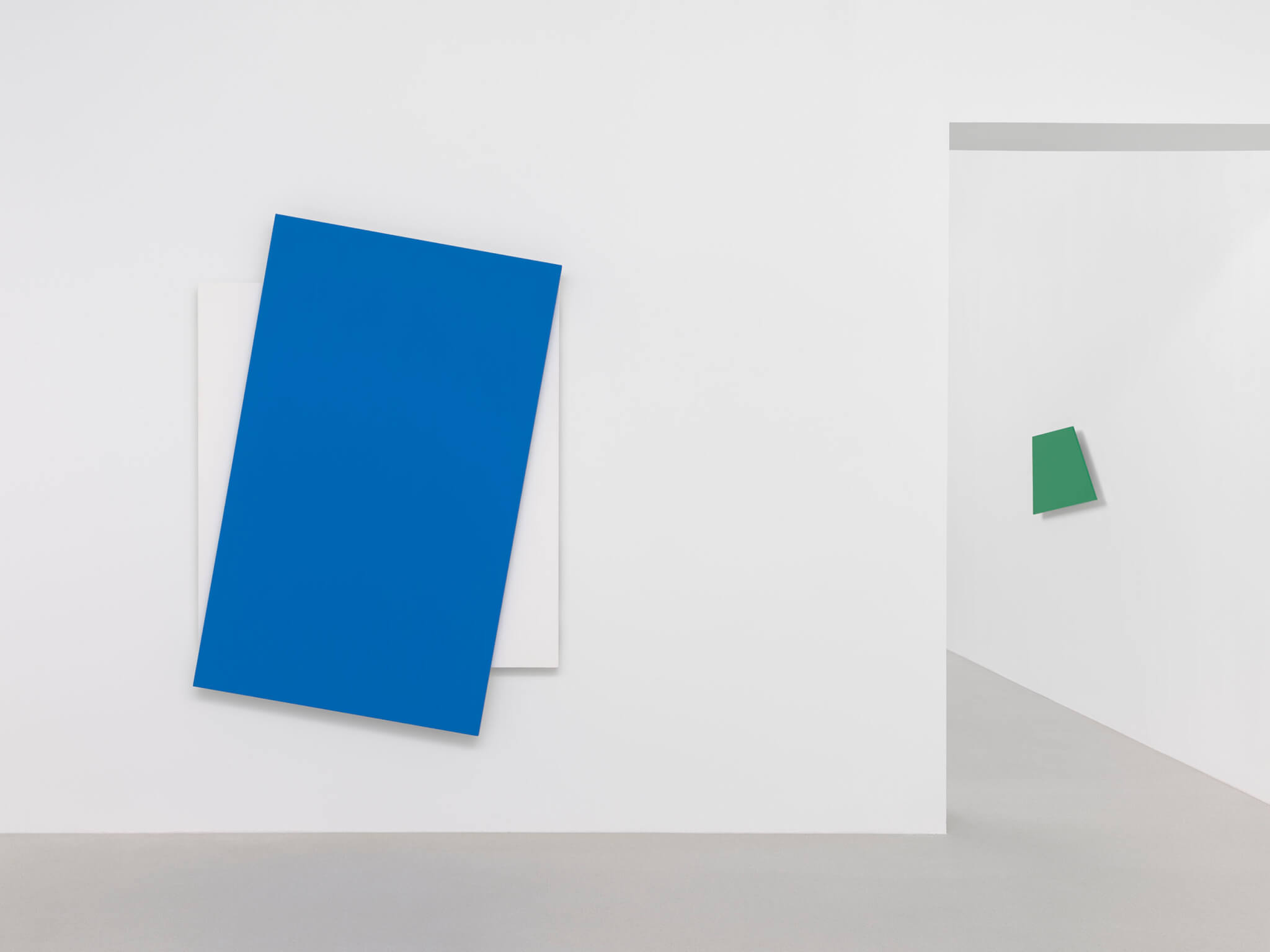

The exhibition lovingly surveys Kelly’s career, offering up some perennial hits like 1953’s Tiger and the 2014 installment of his decades-long exploration of Spectrums. At times, however, the exhibition, curated by Glenstone’s director, Emily Wei Rales, seems as concerned with solidifying the institution’s reputation as an important player in the contemporary art world as it does with providing visitors an overview of Kelly’s career. The exhibition is generally light on didactic text: There are no small labels providing curatorial insight next to individual artworks— only titles, dates, and institutional information, presumably to let visitors take in the works on their own terms. Each room does feature a brief paragraph or two introducing major themes in Kelly’s work and highlighting key pieces of his oeuvre. These key works predominantly come from Glenstone’s collection, not from the collections of some of the notable institutions (MoMA, the Philadelphia Museum of Art, and many more) that lent to the show.
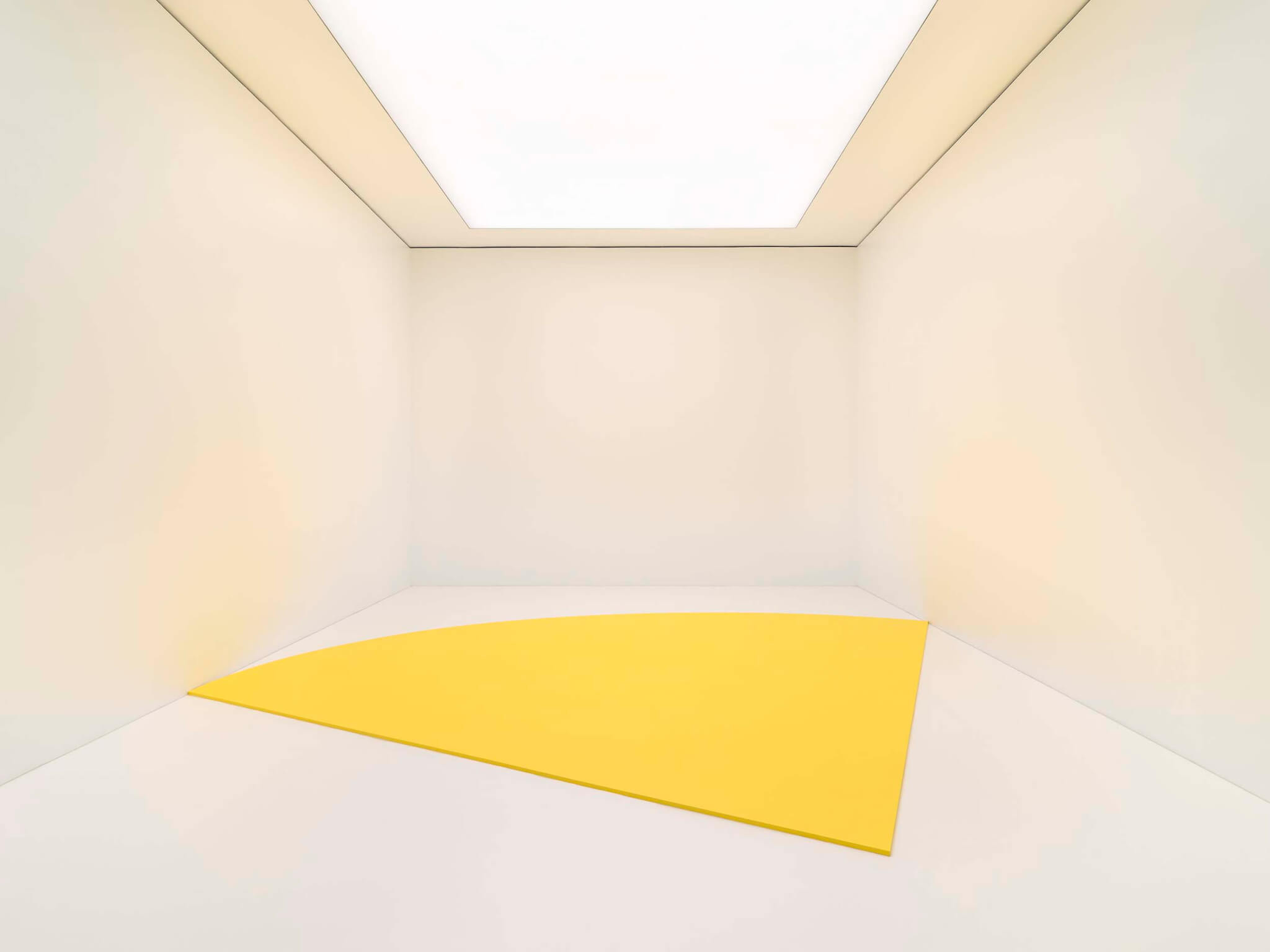
Yellow Curve (1990) enlarges Kelly’s earlier shaped canvases to massive scale (25 by 24 feet) and moves from the wall to the floor in a room separate from the rest of the exhibition that seems to be specifically designed to accommodate the work, which was originally commissioned by and created for Portikus, a contemporary art institution in Frankfurt. While Kelly certainly had many monumental works—the wingspan of the wall sculpture shown at MoMA is even larger than Yellow Curve’s—this work feels uniquely massive. The sculpture’s yellow paint almost glows, as Wei Rales notes in a printed-out email, one of many Yellow Curve–related studies and ephemera in an adjoining room. If earlier works like Painting in Three Panels attempted to incorporate the wall’s negative space into the artwork, Yellow Curve seems to subsume the entirety of the space (the walls, the floor, the ceiling, even the entryway) into the artwork, effectively blurring the line between where architecture ends and artwork begins.
Kevin Ritter is the managing editor of Urban Omnibus.








